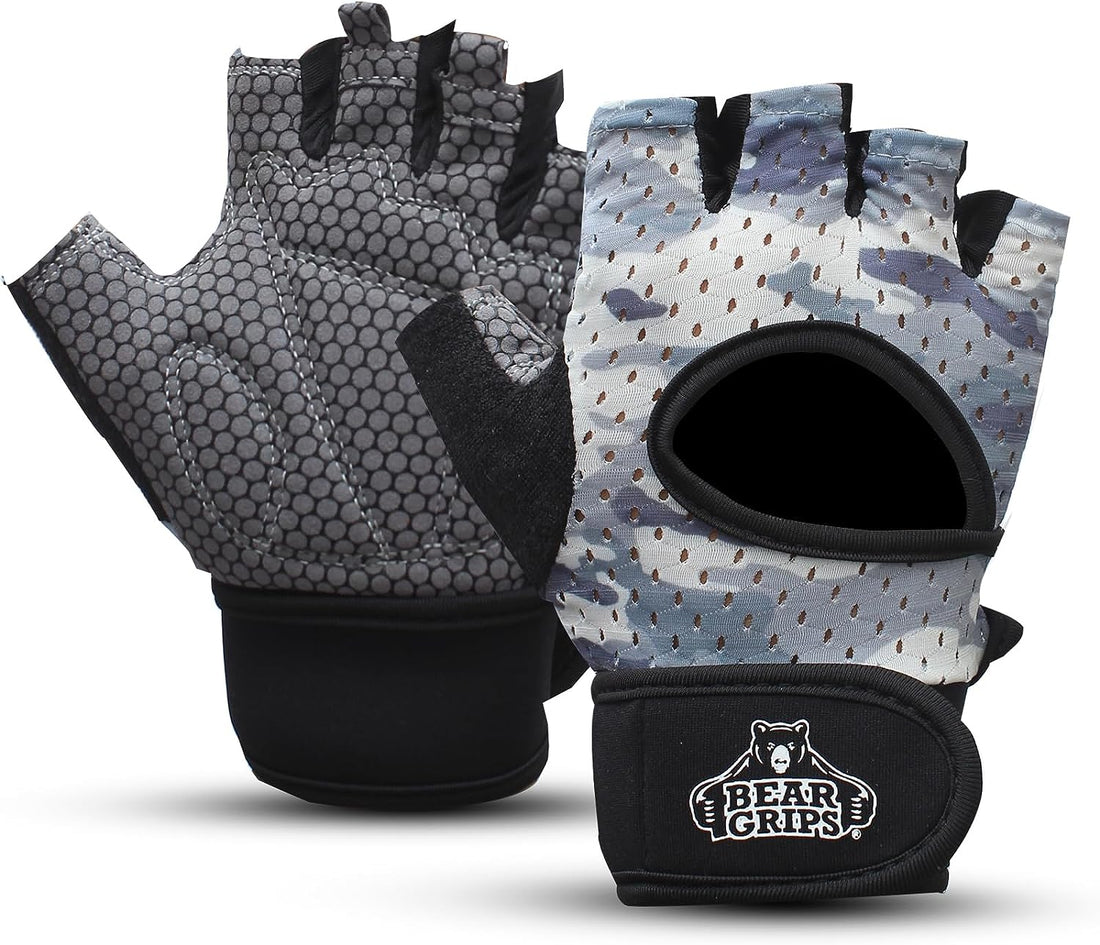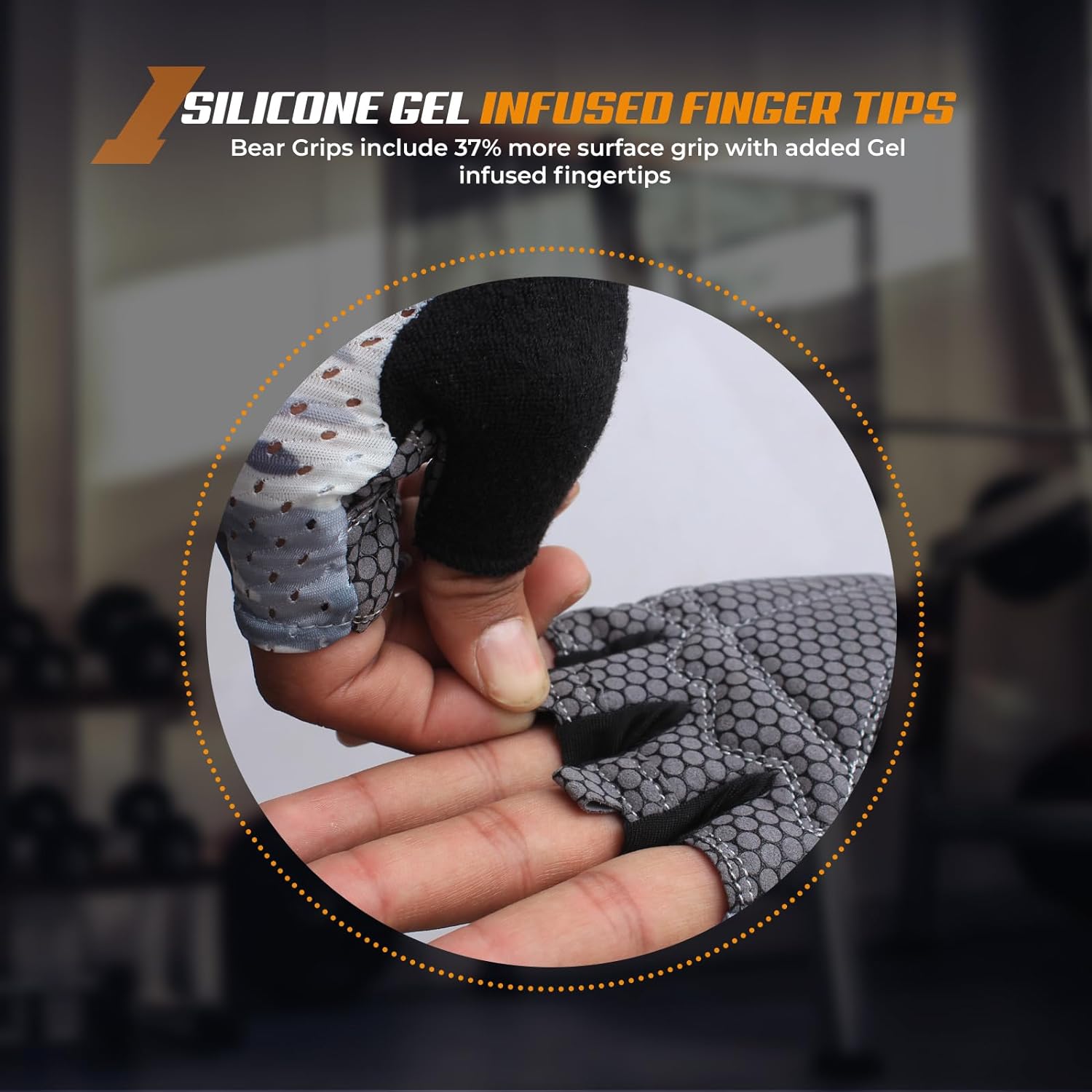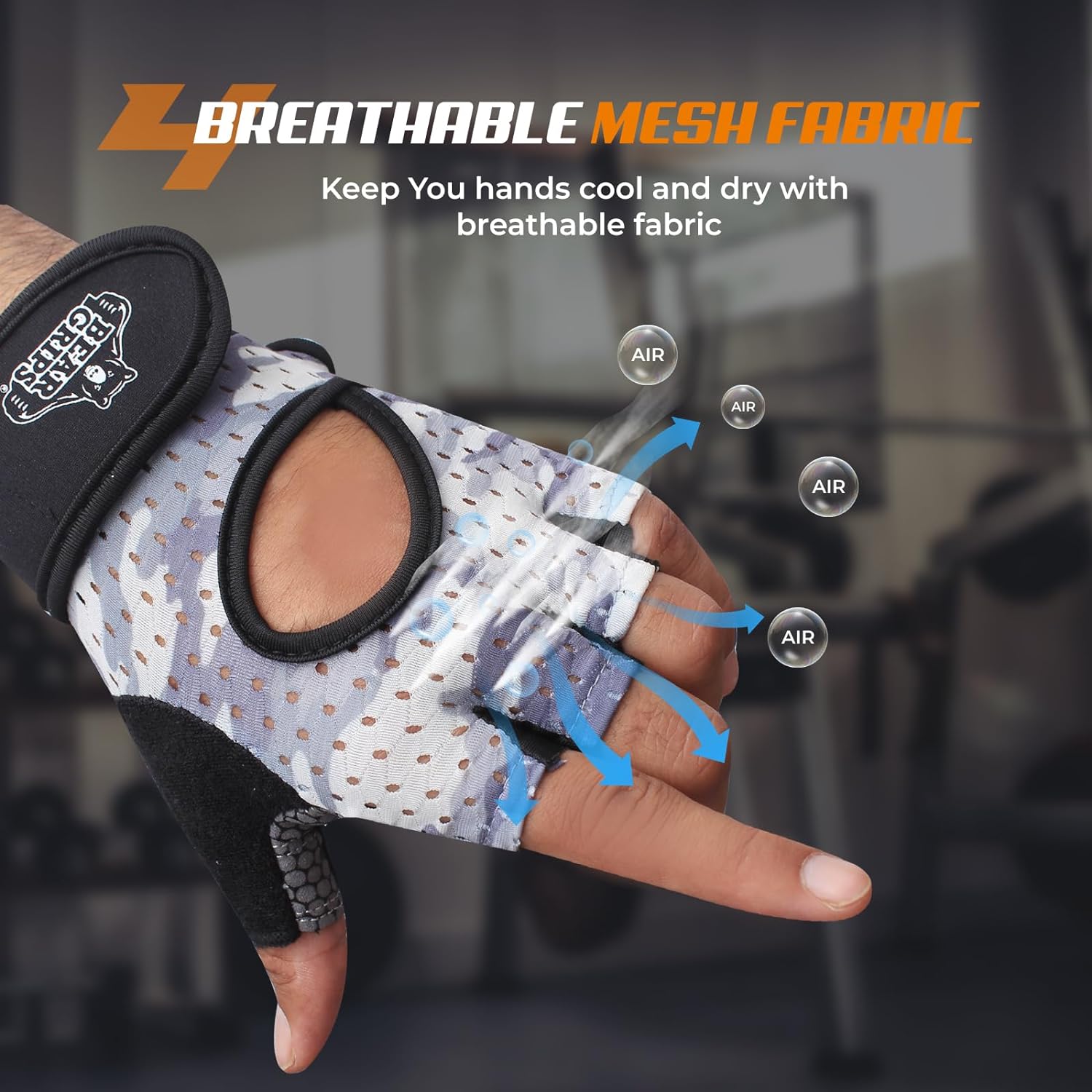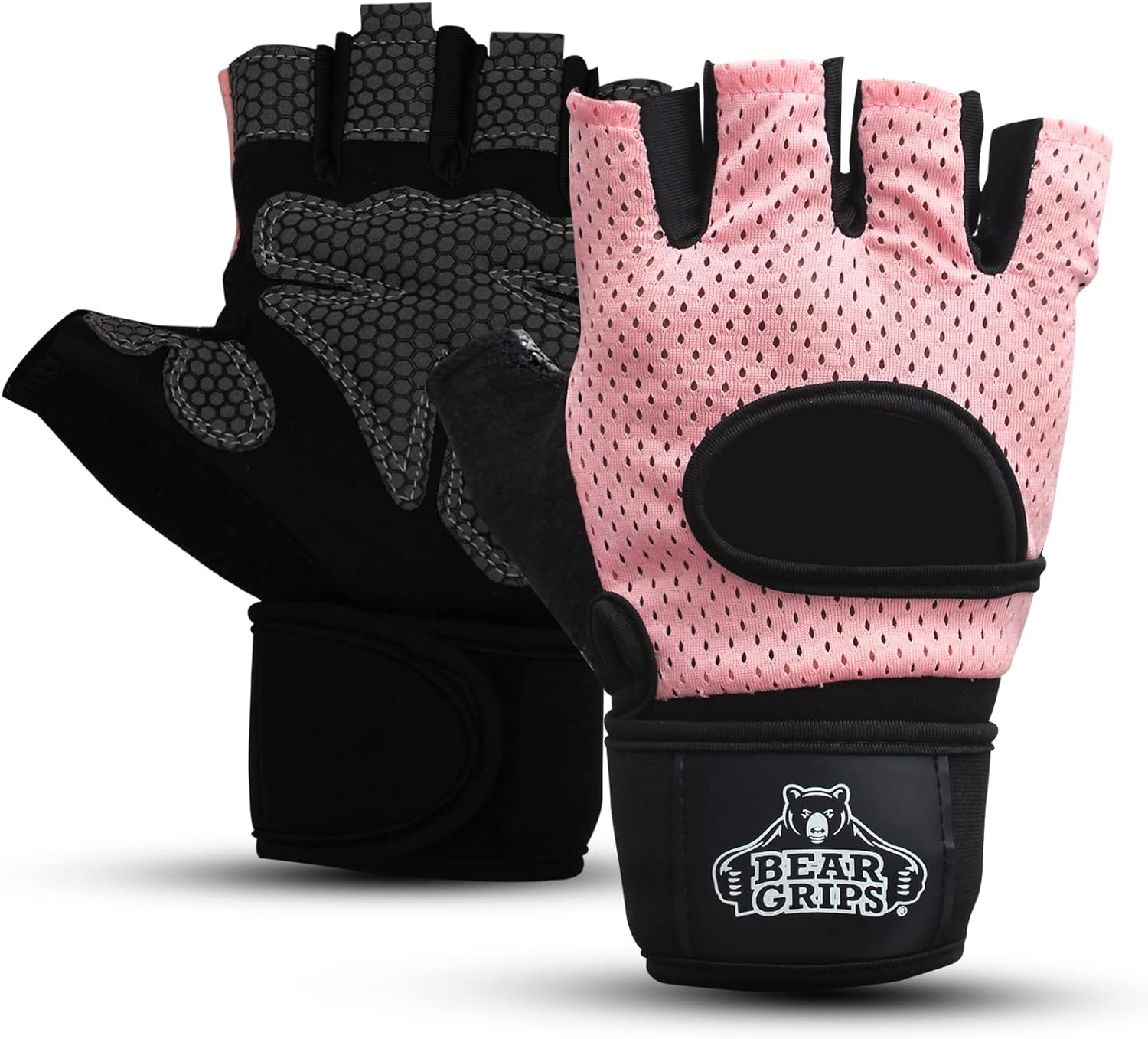
Workout Gloves vs Bare Hands: Exploring the Benefits and Drawbacks
Share
The debate between using workout gloves and bare hands in the weightlifting community is ongoing. Weightlifters often wonder whether workout gloves are necessary for optimal training performance, or if going bare-handed is the better choice. This article aims to provide a comprehensive analysis of both options, outlining the benefits and drawbacks of each, to help readers make an informed decision.
Key Takeaways:
- Workout gloves offer improved grip and protection during weightlifting exercises, reducing the risk of injuries.
- Bare hands allow for a natural grip and can enhance technique, providing a direct connection to the weights.
- Workout gloves can prevent calluses and blisters, offering hand protection and enhanced comfort.
- Bare hands allow for better muscle development in the hand and forearm muscles used for gripping.
- Personal preference and individual needs play a crucial role in choosing between workout gloves and bare hands.
Pros of Workout Gloves
Workout gloves offer numerous advantages for weightlifters. They provide an improved grip, allowing for better control over weights and reducing the risk of injuries. With enhanced grip strength, weightlifters can focus on their form and technique, maximizing their training performance.
Gloves also provide protection for the hands, offering a barrier against the development of calluses and painful blisters. By absorbing sweat and preventing friction, gloves help maintain the integrity of the skin, promoting optimal comfort during workouts.
Another benefit of workout gloves is the added wrist support they provide. Designed with stability and padding, these gloves help protect the wrists from strain and potential injuries. By reducing the pressure on the wrists during heavy lifting, gloves allow weightlifters to maintain proper form and alignment, minimizing the risk of discomfort or long-term damage.

Furthermore, workout gloves can act as a barrier against germs. By creating a protective layer between the hands and shared gym equipment, gloves help minimize the risk of bacterial transfer and the spread of germs, promoting a cleaner and more hygienic workout experience.
Overall, workout gloves offer improved grip, protection against calluses and blisters, wrist support, and a safeguard against germs. These benefits contribute to a more comfortable and effective weightlifting session, allowing weightlifters to focus on their training goals with confidence.
| Benefits of Workout Gloves | Keywords |
|---|---|
| Improved grip | improved grip |
| Protection against calluses and blisters | calluses, blisters |
| Wrist support | wrist support |
| Barrier against germs | protection |
Cons of Workout Gloves
While workout gloves offer several benefits, there are certain drawbacks that weightlifters should consider before choosing this option. One notable disadvantage is the potential for grip problems when using gloves during weightlifting exercises. In some cases, the added padding and material of the gloves can make it harder to maintain a secure grip on thicker bars or equipment, compromising the lifter's ability to lift heavier weights or perform certain movements with precision.
In addition to grip problems, another concern is the impact on the "feel" of the exercise. The sense of touch and connection with the bar or weights can be dampened when wearing workout gloves. This loss of tactile feedback may affect the lifter's ability to gauge the positioning and stability of the weights, potentially impacting their overall performance and technique.
However, it is important to note that these limitations can be overcome through proper experimentation and finding the right fit for individual needs. Some lifters may find that certain gloves offer a balance between grip assistance and maintaining a satisfactory feel during exercises. Finding the perfect fit of workout gloves, considering factors such as material, padding, and size, can help mitigate these drawbacks and optimize the lifting experience.
The Importance of Personal Preference
When it comes to deciding whether to use workout gloves or go bare-handed during your workouts, personal preference plays a crucial role. Every individual has unique preferences, comfort levels, and goals, which can greatly influence their choice. To make an informed decision, it is recommended to experiment with both approaches and find what works best for you.
Experimentation is key when determining which option provides optimal comfort, grip, and overall training performance. Trying different exercises and lifting techniques with and without gloves will help you understand how they affect your workout experience.
Consider factors such as your hand size, sweat levels, and the types of exercises you perform. Some individuals find that workout gloves offer a better grip, while others may feel that going bare-handed allows for a more natural connection with the weights.
Remember, there is no one-size-fits-all solution when it comes to workout gloves or bare hands. It's all about what feels right for you and complements your training style and goals.
By experimenting and paying attention to personal preference, you can optimize your training sessions and find the approach that suits you best. It may take some time and trial and error, but the results will be worth it in the long run.
Considerations for Personal Preference:
- Hand size and grip strength
- Comfort during different exercises
- Sweat levels and grip enhancement
- Preference for natural feel or protective barrier
- Exposure to germs and hygiene considerations
By taking these considerations into account, you can make an informed decision and optimize your workout experience.
Remember, both workout gloves and bare hands have their benefits and drawbacks. The key is to find what works best for you personally. Whether you choose to wear gloves, go bare-handed, or even try alternative options, prioritize personal preference and listen to your body's feedback.

Benefits of Bare Hands
Training with bare hands offers unique advantages that can enhance your weightlifting experience. By opting for bare hands, you allow for a natural grip, establishing a direct connection between your hands and the bar or weights. This promotes better technique as you can feel the weight and make necessary adjustments during your lifts. Some weightlifters believe that training bare-handed can lead to improved muscle development in the hand and forearm muscles used for gripping, as they are not assisted by gloves.
Incorporating bare-handed training into your routine can unlock a range of benefits:
- Enhanced Grip Strength: Training without the assistance of gloves challenges your grip strength, helping you develop a stronger hold on the weights. This can have a positive impact on your overall lifting performance and progress.
- Improved Technique: The direct contact between your skin and the equipment allows you to better control and manipulate the weights. This can lead to enhanced lifting technique and more efficient movements throughout your exercises.
- Targeted Muscle Development: Gaining a natural grip on the weights engages the hand and forearm muscles to a greater extent. This can result in improved muscle development in these areas, contributing to overall arm strength and aesthetics.
While there are inherent benefits to training with bare hands, it is important to assess your personal preferences and consider the specific demands of your training routine. Some weightlifters may find gloves more suitable for certain exercises or circumstances, while others may prefer bare hands for the majority of their workouts. Ultimately, finding the right balance between using gloves and training bare-handed can help optimize your muscle development and training performance.
| Gloves | Bare Hands |
|---|---|
| Provides protection against calluses and blisters | Allows for a natural grip |
| Offers wrist support | Improves lifting technique |
| Reduces the risk of grip problems | Promotes targeted muscle development in the hand and forearm |
Protection Against Skin Conditions and Allergies
Workout gloves can provide crucial protection against various skin conditions and allergies that can be exacerbated during weightlifting. These gloves act as a barrier, minimizing the risk of infections and adverse reactions, particularly for individuals with pre-existing skin conditions or known allergies. By wearing workout gloves, weightlifters can safeguard their skin and enjoy a more comfortable training experience.
"Using workout gloves not only offers enhanced grip and support, but it also provides a protective layer that shields the skin from potential irritants and allergens present in weightlifting equipment."
Skin conditions such as eczema can be triggered or worsened by direct contact with harsh materials or sweaty surfaces. Workout gloves, with their protective barrier, can significantly reduce the risk of such conditions flaring up during intense weightlifting sessions. By preventing direct skin contact, gloves serve as a preventive measure against the development or exacerbation of these conditions, enabling weightlifters to focus on their training goals.
Allergies to metals or other materials commonly found in weightlifting equipment are another concern for some individuals. These allergies can cause skin rashes, redness, and irritation, hampering both the performance and overall workout experience. Workout gloves act as a shield, preventing direct contact between the skin and potential allergens, decreasing the likelihood of adverse reactions and allowing weightlifters to train without discomfort.
Additionally, workout gloves assist in reducing the transfer of sweat, bacteria, and other potentially harmful substances commonly found on weightlifting equipment. By acting as a protective barrier, gloves minimize the risk of infections and skin irritation caused by exposure to these elements.
| Benefits | Description |
|---|---|
| Protection against skin conditions | Minimizes the risk of skin conditions such as eczema |
| Allergen protection | Prevents skin irritation caused by allergies to metals or materials |
| Reduces transfer of sweat and bacteria | Minimizes the risk of infections and skin irritation |
In conclusion, wearing workout gloves offers an additional layer of protection against skin conditions and allergies commonly associated with weightlifting equipment. By serving as a barrier, these gloves help prevent skin irritations, minimize the risk of infections, and reduce the impact of potential allergens. Incorporating workout gloves into weightlifting routines can ensure a safer, more comfortable experience for individuals with pre-existing skin conditions or known allergies.

Considerations for Warts and Bacteria
When it comes to working out in communal gym settings, concerns about warts and bacterial contamination are valid. Shared gym equipment can harbor germs that can easily be transferred to the skin, leading to infections. However, wearing workout gloves can provide an effective solution for infection prevention.
Gloves act as a protective barrier between the hands and the equipment, significantly reducing the risk of warts and other bacterial particles commonly found in gyms. By wearing gloves, individuals create a physical barrier that blocks direct contact with potentially contaminated surfaces.
Not only do workout gloves help prevent the transmission of bacteria, but they also play a crucial role in minimizing the risk of warts. Warts are caused by the human papillomavirus (HPV), which thrives in warm, moist environments. By wearing gloves, individuals can create an inhospitable environment for the virus, reducing the likelihood of developing warts on the hands.
When choosing workout gloves for infection prevention, it is essential to opt for gloves that are easy to clean and sanitize. Regularly washing and drying gloves can further reduce the buildup of bacteria and keep them hygienic for future workouts.
Advantages of Workout Gloves for Infection Prevention:
- Act as a protective barrier against bacteria and warts
- Significantly reduce the risk of infection transmission
- Create an inhospitable environment for the human papillomavirus (HPV)
- Easy to clean and sanitize for improved hygiene
By wearing workout gloves, individuals concerned about warts or bacterial contamination can prioritize their health and well-being during their gym sessions. The next section will discuss the impact of gloves on grip strength and technique for weightlifting.
Proper Grip and Technique
Some weightlifters argue that wearing gloves can lead to reduced grip strength and hinder the development of hand and forearm muscles. While this assertion may have some validity, it can be mitigated through specific grip strength training exercises. Furthermore, individuals who have been lifting for a while and decide to start wearing gloves may need to make adjustments to their technique to accommodate the additional layer between their hands and the bar.
Developing grip strength is crucial for weightlifting, as it allows for better control and stability during exercises. While workout gloves may provide some grip assistance, relying solely on gloves for grip strength development can be counterproductive. Weightlifters can incorporate exercises such as dead hangs, farmers carries, and wrist curls to target and improve grip strength. These exercises can help build the necessary forearm and hand muscles needed for a strong grip.
Moreover, when weightlifters transition from bare hands to using gloves, they may initially experience some differences in technique due to the added layer of material. Adjusting technique to accommodate the gloves and maintain proper form is essential for optimal performance and injury prevention.
"While gloves can offer benefits like protection and reduced calluses, they do change the feel and grip when handling weights. The key is to find a balance between hand protection and ensuring your technique isn't compromised."
Weightlifters should pay attention to their hand positioning, grip width, and bar contact when wearing gloves. Making slight modifications to these aspects can help maintain a secure grip and ensure proper muscle engagement. Experimenting with different glove materials and styles can also aid in finding the right fit and grip for individual preferences and lifting styles.
Grip Strength Training Exercises
| Exercise | Description |
|---|---|
| Dead Hangs | Holding onto a bar or pull-up bar for an extended period to strengthen the grip. |
| Farmers Carries | Walking while holding heavy weights by the sides to develop grip strength and overall stability. |
| Wrist Curls | Using a dumbbell or barbell, curling the wrist upward and downward to target forearm and grip muscles. |
By incorporating grip strength training exercises and making necessary adjustments to technique, weightlifters can mitigate any potential reduction in grip strength caused by wearing gloves. It is important to find the right balance between hand protection and maintaining proper form to ensure optimal performance and avoid injury.
Addressing Calluses and Blisters
Weightlifting often leads to the development of calluses, which can provide a protective layer for the skin. While some weightlifters embrace calluses as a natural part of the sport, others may prefer to prevent or minimize their occurrence. In such cases, workout gloves offer an effective solution for hand protection.
By wearing workout gloves, weightlifters can create a barrier between their hands and the equipment, reducing friction and minimizing the formation of calluses. The gloves act as a shield, preventing the formation of painful blisters and providing a layer of cushioning during intense workouts.
Additionally, workout gloves can help maintain proper grip and reduce strain on the hands, further minimizing the risk of calluses and blisters. With gloves, weightlifters can focus on their training performance without the distraction of discomfort or potential injuries caused by developing calluses.
Benefits of Workout Gloves in Addressing Calluses and Blisters:
- Prevents friction and reduces the formation of calluses
- Creates a cushioning layer to minimize the risk of blisters
- Offers hand protection during intense workouts
- Maintains proper grip and reduces strain on the hands
While some weightlifters may prefer to allow calluses to form naturally, it's important to consider individual comfort and hand protection. Workout gloves provide a practical solution for those who aim to minimize calluses and blisters, allowing them to focus on their training performance with added confidence.
| Benefits | Drawbacks |
|---|---|
| Prevents friction and callus formation | Potential loss of "feel" during certain exercises |
| Protects against blisters | Possible grip problems |
| Provides hand protection | |
| Maintains proper grip |
Power Grips as an Alternative
In addition to traditional workout gloves, individuals seeking an alternative option can consider using Power Grips. These innovative accessories have gained popularity in the weightlifting community as a versatile and effective solution for enhancing grip strength and providing finger and hand protection. Power Grips combine the benefits of gloves, weightlifting wrist wraps, wrist supports, and hooks, making them a comprehensive weightlifting accessory.
One of the primary advantages of Power Grips is their ability to provide a superior grip on weights. Their specialized design and materials optimize traction, allowing weightlifters to maintain a secure hold on the bar. This improved grip can enhance performance and reduce the risk of accidents or injuries caused by slipping weights.
Power Grips also offer excellent wrist support, which is crucial for heavy lifting. The additional stability provided by these accessories can help prevent wrist strain and maintain proper form during exercises. By reducing the stress on the wrists, Power Grips allow weightlifters to focus on maximizing their training performance.
Furthermore, Power Grips offer significant finger and hand protection. The padding and durable materials used in their construction help prevent calluses, blisters, and skin abrasions that can result from intense weightlifting sessions. By minimizing hand discomfort and injuries, Power Grips enable weightlifters to train consistently and comfortably, promoting long-term progress and results.
Power Grips at a Glance:
| Benefits | Features |
|---|---|
| Improved grip | Traction-enhancing design |
| Enhanced wrist support | Stabilizing and protective |
| Finger and hand protection | Padded and durable materials |
| Safe alternative to bare hands | Reduced risk of calluses, blisters, and abrasions |
Power Grips are particularly suitable for individuals who prioritize safety and hand protection while weightlifting. They allow weightlifters to bypass the potential discomfort and inconvenience of calluses, blister formation, and skin abrasions commonly associated with intense workouts.
Ultimately, Power Grips offer weightlifters a versatile and comprehensive solution for grip enhancement, wrist support, and finger and hand protection. By integrating these accessories into their training routine, individuals can optimize their performance while minimizing the risk of hand-related injuries and discomfort.
Conclusion
The debate between using workout gloves and bare hands in the weightlifting community boils down to personal preference. Both options have their advantages and disadvantages, and the choice depends on your specific needs, comfort, and training goals.
Workout gloves offer improved grip, protection against calluses and blisters, and better wrist support. They also provide comfort and act as a barrier against germs. However, some weightlifters may experience grip problems or feel a loss of connection with the weights during certain exercises.
On the other hand, training with bare hands allows for a natural grip and may improve technique, promoting the development of hand and forearm muscles used for gripping. Bare hands also eliminate the need for gloves, which can be beneficial for individuals who prefer to let calluses form and protect their hands.
Ultimately, finding the right balance between workout gloves and going bare-handed requires experimentation. Try both approaches and evaluate their impact on your training performance and overall protection. By considering your personal needs and goals, you can make an informed decision that enhances your weightlifting experience.
Bear Grips has the best workout gloves to give a try! Get your hands on them today!
Shop at Amazon.com Now!
FAQ
What are the benefits of using workout gloves?
The benefits of using workout gloves include improved grip, protection against calluses and blisters, better wrist support, increased comfort, reduced pressure on the hands, and protection against germs.
Are there any drawbacks of using workout gloves?
Some drawbacks of using workout gloves include potential grip problems and a loss of "feel" during certain exercises. However, these limitations can be overcome through proper experimentation and finding the right fit.
Is using workout gloves or going bare-handed a matter of personal preference?
Yes, the choice between using workout gloves and going bare-handed is ultimately a matter of personal preference. It is recommended to try both approaches and determine which one works best for individual comfort, grip, and overall training performance.
What are the benefits of using bare hands during weightlifting?
Using bare hands allows for a natural grip and can improve technique by providing a direct connection to the weights being lifted. Some weightlifters believe that bare hands can lead to better muscle development in the hand and forearm muscles used for gripping.
Can workout gloves protect against skin conditions and allergies?
Yes, workout gloves can act as a barrier, minimizing the risk of skin conditions such as eczema and allergies to certain metals or materials used in weightlifting.
Do workout gloves help prevent the transmission of warts and bacterial infections?
Yes, workout gloves act as a protective barrier and can significantly reduce the risk of warts and other bacterial infections that may be commonly found on shared gym equipment.
Can using workout gloves affect grip strength and technique?
Some weightlifters argue that using workout gloves can lead to reduced grip strength and hinder the development of hand and forearm muscles. However, these concerns can be mitigated through specific grip strength training exercises and adjustments to technique.
Are calluses a natural part of weightlifting, and can workout gloves help prevent them?
Yes, calluses are a natural part of weightlifting and can provide a protective layer for the skin. Some weightlifters choose not to wear gloves to allow calluses to form and protect their hands. However, for those who prefer to prevent or minimize calluses, workout gloves can be an effective solution.
What are Power Grips, and how are they different from traditional workout gloves?
Power Grips are an alternative option that combine the benefits of workout gloves, weightlifting wrist wraps, wrist supports, and hooks. They provide better grip, wrist support, and finger and hand protection, making them particularly useful for individuals who prioritize safety while maintaining a secure grip on weights.
What is the conclusion regarding workout gloves vs bare hands?
The decision to use workout gloves or go bare-handed during weightlifting is ultimately a personal choice. Both options have their benefits and drawbacks, and individuals should consider their specific needs, comfort, and training goals. Experimentation and finding the right balance between using workout gloves and going bare-handed can help optimize training performance and protection.


